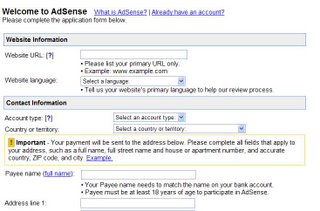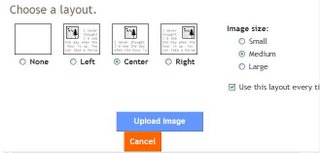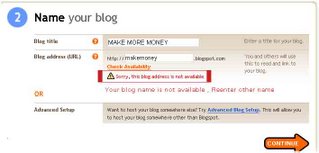A decade ago, when I was employed as a chartered surveyor for a major British insurance company, I realized that I was doing something that was making my family happy, but not making me happy. I realized, too, that I needed to be doing something creative, the end result of which I could see for myself.
At the same time, I met my future business partner, David Tyreman, who was also working as a surveyor at the same company. Instantly, we validated each other's feelings—and frustrations—about the work we were doing.
During a two-week vacation to Santa Barbara, California, we did more than just vent. Knowing we wanted to be self-employed, but hardly knowing what we wanted to be doing, we asked ourselves a series of questions that, at first glance, appeared to have little to do with business—questions such as: What were our personal strengths? What did we want out of any business we launched?
The answers were just as surprising. At the top of the list of must-haves were words like “fun,” “adventure,” “traveling,” “non-corporate,” and toward the bottom was the word “money.” That really surprised us. As for those "personal strengths," I knew that my skills and personality were best suited for the role I would eventually play as chief executive, namely finding new customers, new markets and new products.
A Business Plan for YouDuring that discussion, we also gave ourselves a deadline. One year from that very day, June 1, 1987, we would be self-employed, we told ourselves. It was a deadline we indeed did meet. On June 1, 1988, we officially became our own bosses, having given our notices a month earlier.
A year after that, in 1989, we sat down again, this time to put a plan in writing for a $50,000 credit line. It was then that we understood that we really had two plans, a written plan for the bank—undoubtedly a necessary document for securing money from a boring man in a gray suit—and an additional unwritten plan for us. We had been working from the unwritten plan ever since the day on the hotel balcony in California. What's more, it was the unwritten plan that clearly was the more important of the two.
As an entrepreneur starting or expanding a business, you, too, must work from a plan that engages your heart as well as your head. While you have a plan for your bankers, you must also have a plan for you, the one that speaks to your passions. You must understand that it's business planning from the heart that really builds businesses.
Milestones from the HeartIn our case, it was the plan from our hearts that enabled us to start Propaganda, which provides vintage and contemporary decoratives, artwork and fixtures for department stores, specialty retailers and restaurants. When we set out for the United States in August 1988 with our first cargo of antiques, we didn't know what type of company we'd eventually build. We just knew that buying and selling antiques satisfied our need for "travel" in our work. Quitting our jobs to become self-employed and leaving England with our antiques and dreams were our first passion-driven milestones.
Our next milestone was securing the $50,000 credit line, for which we did write the formal plan. This funding enabled us to secure enough inventory, scout for customers at trade shows and keep a roof over our heads. Interestingly, the bank manager who signed off on the loan later confided that he had hardly glanced at our written plan. It had been the passion with which David and I had delivered our proposal that had convinced him.
A few years later, in 1993, planning from the heart again drove a major decision. By then, our business had evolved from selling antiques to individuals to developing a market among upscale retailers. Having secured contracts from Banana Republic, Polo Ralph Lauren, and others, we knew we needed to expand.
Expansion came in the form of a 30,000-square-foot warehouse in San Francisco that was much bigger than we needed at the time. When we saw it, however, we immediately realized that it would enable us to grow. Our passion told us we had come to the United States to do something big, not little, and so we bought the warehouse. Today, it provides us with office and storage space, as well as two apartments, one for my wife and me, the other for David and his partner.
Finding Your PassionIn planning from the heart, an entrepreneur needs to understand what drives him. In my case, that was easy. During my growing-up years, my father had toiled as a traveling menswear salesman, work that he disliked. He all but ignored interests that would have brought joy to his life, such as his love for music. A few days before he died, he played a Nat King Cole song on the piano—I hadn't even known he could play the piano! My father's work left him so broken and exhausted that he couldn't even enjoy life outside of work. His experience convinced me to live my life differently.
In finding your own passion, focus on what you love, what you're good at, and what suits your personality. Ask questions such as those that David and I raised on that hotel balcony in California: Do I want to be creative? Work flexible hours? Travel?
By all means, build charts and graphs. But build them around parameters that will enable you to create a business that does the following:
Reflects you; if you're fun, trustworthy and unconventional, these should be your company's core values.
Involves your passion; it's infectious—even loan officers love associating with passionate people.
Plays to your strengths; nothing's worse than associating your work with pain or boredom.
Does business with people who understand and appreciate your values; human beings do their best when they're appreciated.
Breaks the rules; if you've always wanted a disco dance floor in your boardroom, then have one! (We do, and our customers love it!)
Doesn't worry about the bottom line; if you're having a blast, you'll do an incredible job, and the money will follow.
These days, we're gearing up for the next milestone, taking Propaganda from revenue of $4 million to $50 million, and, yes, we do have a written plan. But in reality, we know that it's the plan in our hearts that will get us to that milestone.
This article provided by The Kauffman Center for Entrepreneurial Leadership (KCEL) through its small business Web site
www.entreworld.org. EntreWorld is an online information resource for entrepreneurs and supporters of entrepreneurship. EntreWorld provides a solution to information overload on the Web by providing highly filtered information coded by stage of business development.



























 then click on
then click on 
 If you are ready to make a blog then click on
If you are ready to make a blog then click on 











